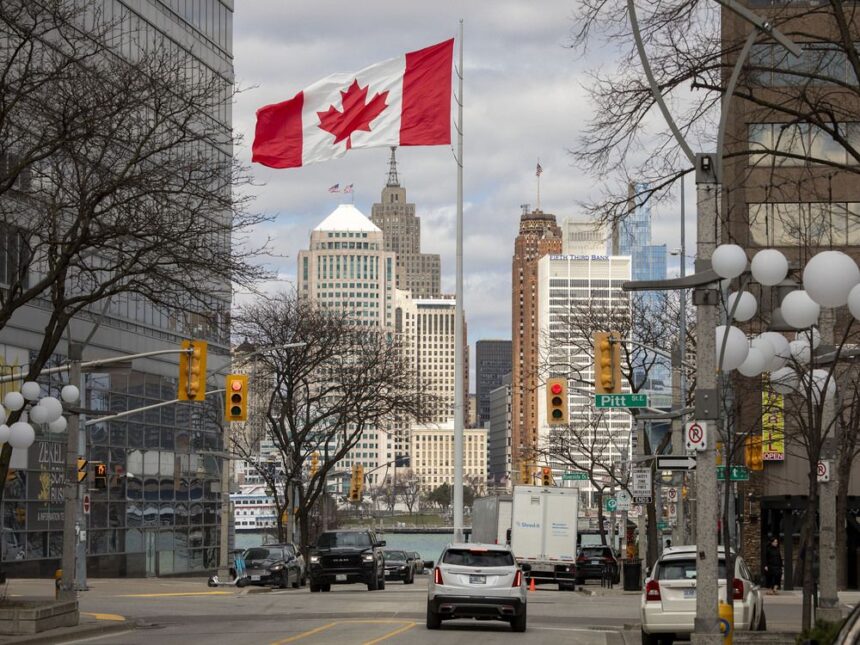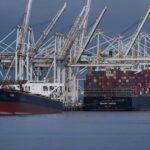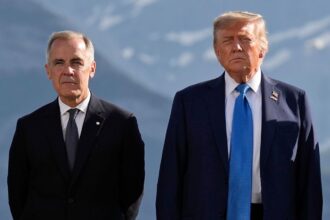The Ambassador Bridge stretches across the Detroit River like a steel lifeline, carrying $400 million in daily trade between the United States and Canada. For generations, this crossing has symbolized the world’s most successful cross-border economic relationship. Now, that relationship faces its greatest test in decades as Donald Trump’s promised 10-25% tariffs on Canadian goods loom over communities that have functioned as a single economic ecosystem for over a century.
“We’re looking at potentially devastating consequences,” says Mary Rivers, president of the Detroit-Windsor Trade Coalition. “This isn’t just about big manufacturers—it’s about thousands of families whose livelihoods depend on the seamless movement of components and finished products across this border every day.”
The automotive sector stands to bear the heaviest burden. Windsor, often called “Motor City North,” sends 85% of its manufactured auto parts directly to Detroit assembly plants. These components cross the border an average of seven times before becoming part of a finished vehicle. Under Trump’s proposed tariff structure, a single car door could face cumulative taxation exceeding 40% of its original value.
At Precision Tool & Die, a Windsor-based supplier employing 127 workers, owner James Chen calculates his company would need to absorb or pass along an additional $4.2 million in annual costs. “We operate on margins of 8-12%,” Chen explains while walking through his factory floor. “There’s simply no mathematical way forward without either significant layoffs or price increases that would make us uncompetitive.”
The economic interdependence between these border cities extends far beyond manufacturing. Healthcare systems have developed cross-border specialization, with Windsor patients regularly traveling to Detroit for specialized cardiac procedures while Detroit residents cross into Canada for more affordable prescription medications. Educational institutions like the University of Windsor and Wayne State University share research facilities and faculty expertise.
Economic analysts predict the tariffs could eliminate up to 16,000 jobs across the Detroit-Windsor region and reduce regional GDP by $3.8 billion annually. More troubling is the potential long-term reconfiguration of supply chains that have evolved over decades of free trade.
“Once these integrated production networks break apart, they don’t easily reconnect,” warns Dr. Elaine Summers, economics professor at the University of Michigan. “Companies will establish new supplier relationships that bypass the border entirely, and that structural change becomes permanent regardless of future policy shifts.”
Canadian officials have already announced plans for retaliatory tariffs targeting American goods, potentially triggering the kind of escalating trade war that devastated both economies during previous protectionist periods. The last major U.S.-Canada trade dispute in 2018-2019 resulted in the closure of three manufacturing facilities in Michigan and two in Ontario.
For residents of these interconnected cities, the tariff threat cuts deeper than economics. Windsor’s Little Italy neighborhood and Detroit’s Mexicantown have shared cultural festivals for generations. Youth hockey leagues regularly schedule games on both sides of the river. An estimated 9,000 workers cross the border daily, including 1,600 Canadian nurses staffing Detroit hospitals.
“We don’t think of ourselves as two separate cities,” says Detroit resident Marcus Williams, whose grandfather worked in Windsor’s automotive plants. “My family has lived and worked on both sides of this river for three generations. These tariffs aren’t just threatening jobs—they’re threatening our way of life.”
As uncertainty looms, both cities are bracing for potentially permanent changes to their economic and cultural landscape—a forced divorce between communities that have functioned as partners rather than competitors for over a hundred years.
The question facing Detroit and Windsor isn’t just whether they can weather another trade war, but whether their unique cross-border identity can survive in an era of resurgent economic nationalism.

























